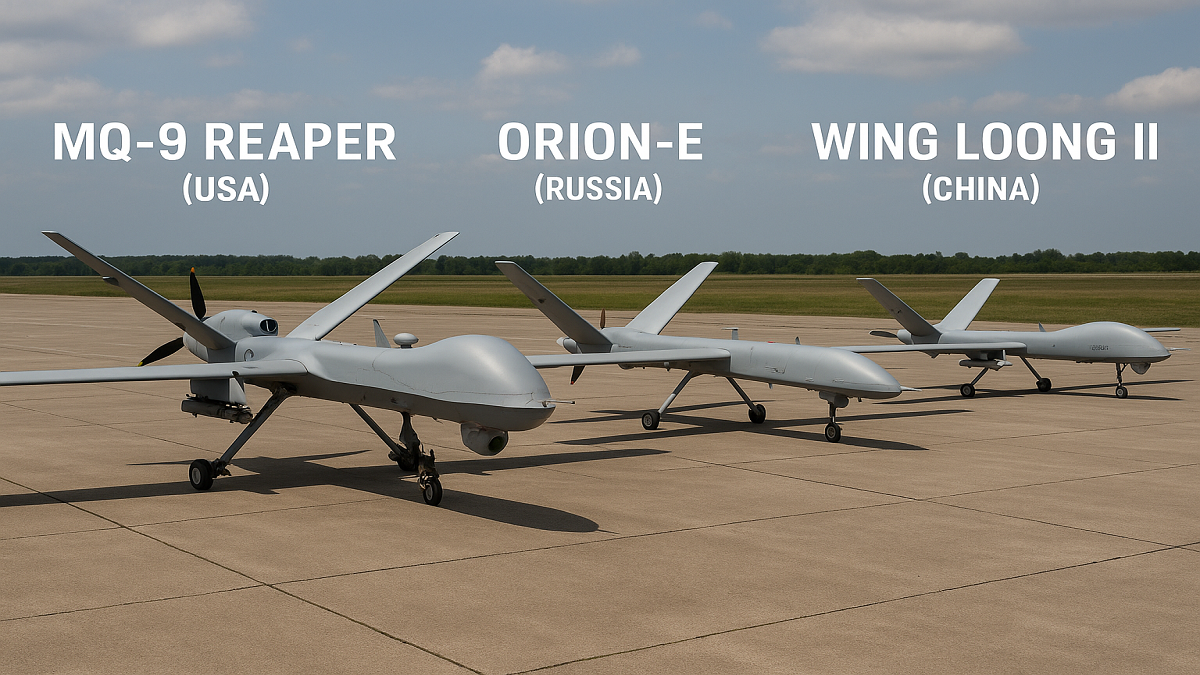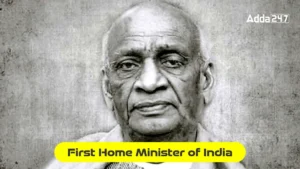In the evolving landscape of modern warfare, Unmanned Aerial Vehicles (UAVs) have become essential tools for intelligence gathering, targeted strikes, and persistent surveillance. Among the most notable armed drones are the MQ-9 Reaper from the United States, the Orion-E from Russia, and the Wing Loong II from China.
Each platform reflects its nation’s strategic doctrine and technological capabilities. This article provides a comprehensive comparison of these three unmanned systems, examining their effectiveness in real-world operations, especially in asymmetric and low-intensity conflicts like a hypothetical campaign in Iran or contested zones such as the Middle East, Africa, or Eastern Europe.
I. MQ-9 Reaper: The Benchmark of Armed Drone Warfare
Overview
The MQ-9 Reaper, developed by General Atomics Aeronautical Systems, is the most widely used armed medium-altitude, long-endurance (MALE) drone in the world. First introduced in 2007, it was designed as a hunter-killer platform, capable of both persistent surveillance and precision strikes.
Key Capabilities
-
Endurance & Range: The MQ-9 can fly for up to 27 hours and has a combat radius of over 1,150 miles, making it suitable for deep reconnaissance and strike missions.
-
Payload: With a payload capacity of 3,800 pounds, it can carry Hellfire missiles, GBU-12 Paveway II laser-guided bombs, and GBU-38 JDAMs.
-
Sensors: Equipped with a multispectral targeting system (MTS-B) that includes infrared, electro-optical, radar, and laser designation—allowing for high-precision targeting.
-
Control & Communication: Operated via satellite uplink, the Reaper provides real-time video feeds, secure command & control, and integration with broader NATO command structures.
Operational Experience
The MQ-9 has been used extensively in Iraq, Afghanistan, Syria, Libya, and across Africa. Its precision capabilities and persistence have made it central to counterterrorism, targeted killings, and battlefield intelligence operations.
II. Orion-E: Russia’s Entry into Armed Drone Combat
Overview
The Orion-E is Russia’s first serious entry into the MALE UAV category, developed by Kronshtadt Group and intended for both domestic use and export. Though relatively new and not yet mass-deployed, it represents a shift in Russian doctrine toward networked warfare and long-range drone operations.
Key Capabilities
-
Endurance & Range: The Orion-E can fly for up to 24 hours and has a maximum range of approximately 250 km line-of-sight, or 1,200 km with satellite control (depending on variant).
-
Payload: Supports a payload of around 440 pounds (200 kg), allowing it to carry guided munitions such as the UPAB-50 and KAB-20 precision bombs.
-
Sensors: Includes electro-optical and infrared cameras, but lacks the multi-sensor fusion sophistication seen in the MQ-9.
-
Stealth & Airframe: While not stealthy, it has a streamlined design aimed at minimizing radar cross-section.
Operational Experience
The Orion-E has reportedly been tested in Syria under limited operational conditions. While still in early deployment, it has shown that Russia is beginning to field an indigenous armed drone capability. However, its limited production scale and restricted export market suggest that it remains a developing system.
III. Wing Loong II: China’s Export-Oriented Combat Drone
Overview
The Wing Loong II, developed by Chengdu Aircraft Industry Group, is part of China’s strategy to expand its military influence through UAV exports. It is designed to be cost-effective, lethal, and easily operable, particularly for nations that lack access to U.S. or NATO technology.
Key Capabilities
-
Endurance & Range: Capable of 20 hours of flight time and an operational range of around 1,500 kilometers, suitable for regional strike operations.
-
Payload: Carries up to 480 kg of weapons, including Blue Arrow-7 missiles, LS-6 glide bombs, and various laser-guided munitions.
-
Sensors: Equipped with synthetic aperture radar (SAR), EO/IR systems, and a laser designator.
-
Export-Focused Design: Built for easy maintenance, low operational cost, and quick integration into third-party military systems.
Operational Experience
Wing Loong II has been sold to multiple countries including UAE, Saudi Arabia, Pakistan, and Egypt. It has been used in Yemen, Libya, and Ethiopia, often in contested environments where air superiority is not guaranteed. Its performance has been mixed, with some effectiveness but also reported issues in reliability and targeting precision.
IV. Comparative Analysis
1. Endurance and Operational Range
-
The MQ-9 Reaper leads with 27 hours endurance and global operational range via satellite command.
-
The Orion-E is close in endurance but lags in range unless equipped with satellite control.
-
The Wing Loong II offers reasonable endurance, but with less flexibility in contested airspace due to limited stealth and slower speed.
Superior Platform: MQ-9 Reaper – unmatched endurance and global deployability.
2. Armament and Payload Effectiveness
-
The MQ-9 carries a diverse payload of combat-tested Western munitions, offering greater lethality and accuracy.
-
The Orion-E has a limited payload and fewer munitions options.
-
The Wing Loong II offers mid-range armament with some variety, but questionable precision based on field performance.
Superior Platform: MQ-9 Reaper – proven versatility and combat effectiveness.
3. Sensor and Targeting Systems
-
The Reaper’s MTS-B system allows for multi-spectral, real-time targeting, far superior to its competitors.
-
Orion-E’s sensor package is more basic, limiting real-time targeting flexibility.
-
Wing Loong II’s sensors are good for the price but less effective in complex targeting environments.
Superior Platform: MQ-9 Reaper – better situational awareness and ISR capability.
4. Operational Experience and Reliability
-
The MQ-9 has decades of operational history in high-risk environments.
-
The Wing Loong II has been tested in multiple countries but with limited effectiveness against modern air defenses.
-
The Orion-E has seen only limited combat deployment and is still in its formative stage.
Superior Platform: MQ-9 Reaper – battle-proven, highly reliable.
V. Strategic Use in Conflict Zones Like Iran
In a scenario such as a U.S.-Iran military confrontation, these drones would play vastly different roles:
-
The MQ-9 Reaper would operate persistently over Iranian airspace, conducting ISR missions, eliminating high-value targets, and guiding other strike assets. Its stealthy sensor profile and long loiter time make it ideal for contested areas.
-
The Orion-E, with its limited operational ceiling and range, would likely need air superiority support and would be vulnerable to Iranian surface-to-air missiles (SAMs).
-
The Wing Loong II would likely be used by allied forces, possibly by regional players or proxies, but would be at risk from even mid-tier air defenses, such as Iran’s Tor or Bavar-373 systems.




 Which City is known as the City of Bambo...
Which City is known as the City of Bambo...
 Who was the First Home Minister of India...
Who was the First Home Minister of India...







